Life and work
His father, Thomas Hippius [ de ], was an evangelical chaplain. He lost his mother at an early age, and was sent to a boarding house in Reval. From 1810 to 1812, he studied drawing at a local religious school, with Carl Sigismund Walther [ et ], a famous painter from Dresden, who was tutoring the children of August von Kotzebue . While there, he became lifelong friends with Otto Friedrich Ignatius, another aspiring artist and son of the school's founder. His friends helped him stage an exhibition, which earned him enough money to study in Prague. He then studied copper engraving at the Academy of Fine Arts, Vienna, from 1813 to 1815.
In 1816, he and his friend, Johann Lebrecht Eggink [ de ], travelled through Salzburg, Munich, Venice and Florence; arriving in Rome in the Spring of 1817. He lived there for two years, and became associated with members of the Nazarene movement, including Johann Friedrich Overbeck, who became a good friend. He produced numerous portraits there; notably one of Beethoven, which is now at the Beethoven House in Bonn. After leaving there, he stopped in Switzerland before returning home.
In 1820, he married Ignatius' sister, Friederike (1798-1886). Shortly after, they moved to Saint Petersburg, where he worked as a portrait painter. Two of their sons, Otto and Karl [ ru ], became architects.
When Ignatius died in 1824, he left a major mural at the church in Tsarskoye Selo unfinished. Hippius completed it in 1825. This helped bring his works to the attention of Georg von Engelhardt, former Director of the Tsarskoye Selo Lyceum, who offered him financial support and helped him to publish one of his most important works; Contemporaries. A Collection of lithographed portraits of government officials, writers and artists. Dedicated to H. I. V. Emperor Alexander I .
He also worked as a drawing teacher; at the "Educational House [ ru ]" and the Elizabethan Institute, as well as publishing several instructional manuals. He returned to Estonia in 1849, and settled in Reval, where he continued to produce portraits, including a series of women in traditional costumes. He died in 1856 and was buried in Hageri, near his birthplace.

The University of Königsberg was the university of Königsberg in East Prussia. It was founded in 1544 as the world's second Protestant academy by Duke Albert of Prussia, and was commonly known as the Albertina.
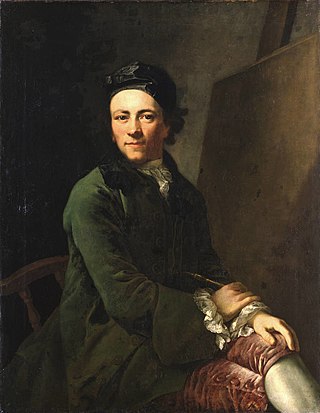
Anton Graff was an eminent Swiss portrait artist. Among his famous subjects were Friedrich Schiller, Christoph Willibald Gluck, Heinrich von Kleist, Frederick the Great, Friederike Sophie Seyler, Johann Gottfried Herder, Gotthold Ephraim Lessing, Moses Mendelssohn and Christian Felix Weiße. His pupils included Emma Körner, Philipp Otto Runge and Karl Ludwig Kaaz.

The Senckenberg German Entomological Institute is a German entomological research institute devoted to the study of insects. Founded in 1886, the institute has an extraordinary insect collection and a world-class entomological library. Since 2009, the SDEI has been part of the Senckenberg Nature Research Society.

Otto Pius Hippius was a Baltic German architect, particularly noted for several buildings in present-day Estonia.
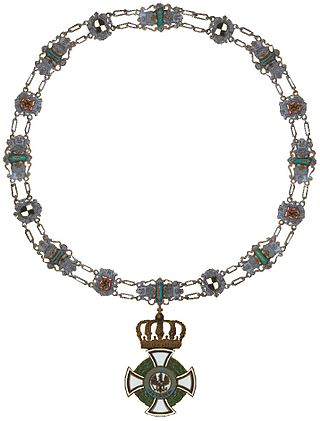
The House Order of Hohenzollern was a dynastic order of knighthood of the House of Hohenzollern awarded to military commissioned officers and civilians of comparable status. Associated with the various versions of the order were crosses and medals which could be awarded to lower-ranking soldiers and civilians.

Eugen Gustav Dücker was a Baltic German painter, in the Romantic style, associated with the Düsseldorfer Malerschule.

The Alter Südfriedhof also known as "Alter Südlicher Friedhof" is a cemetery in Munich, Germany. It was founded by Duke Albrecht V as a plague cemetery in 1563 about half a kilometer south of the Sendlinger Gate between Thalkirchner and Pestalozzistraße.
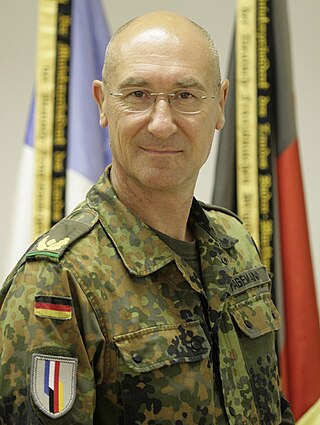
General of the Infantry is a former rank of the German army. It is currently an appointment or position given to an OF-8 rank officer, who is responsible for particular affairs of training and equipment of the Bundeswehr infantry.

Franz Adolf Friedrich Schober, since 1801 von Schober, was a poet, librettist, lithographer, actor in Breslau and Legationsrat in Weimar.

The Albert Order was created on 31 December 1850 by King Frederick Augustus II of Saxony to commemorate Albert III, Duke of Saxony. It was to be awarded to anyone who had served the state well, for civil virtue, science and art.
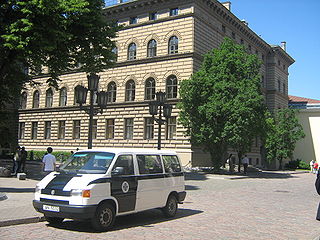
The Livonian Knighthood was a fiefdom that existed in Livonia. It was formed in 1561 by Baltic German nobles and disbanded in 1917 in Estonia, and in 1920 in Latvia. Like other Baltic knighthoods, the Livonian also had semi-autonomous privileged status in the Russian Empire.

Eduard Hau was a Baltic German painter and graphic artist who lived and worked in the Russian Empire.
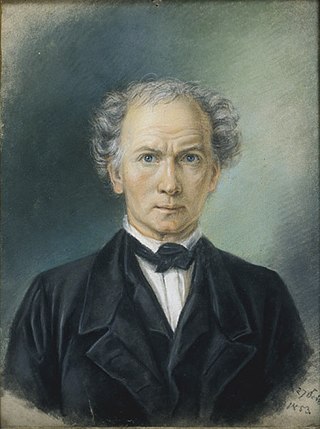
August Georg Wilhelm Pezold was a Baltic-German painter and lithographer.

The Kotzebue family is a Baltic German noble family of Brandenburgish descent, tracing its origin back to Kossebau in Altmark. They held nobility status in the Russian Empire and the Kingdom of Bavaria. The English name of the Alaskan Inuit city of Kotzebue, as well as the neighboring Kotzebue Sound, in the Alaskan Arctic take their names from Otto von Kotzebue, a Russian naval officer of this family.
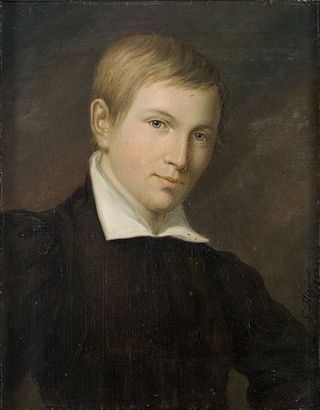
Otto Friedrich Ignatius was a Baltic-German painter, writer, and composer.
This page is based on this
Wikipedia article Text is available under the
CC BY-SA 4.0 license; additional terms may apply.
Images, videos and audio are available under their respective licenses.
















